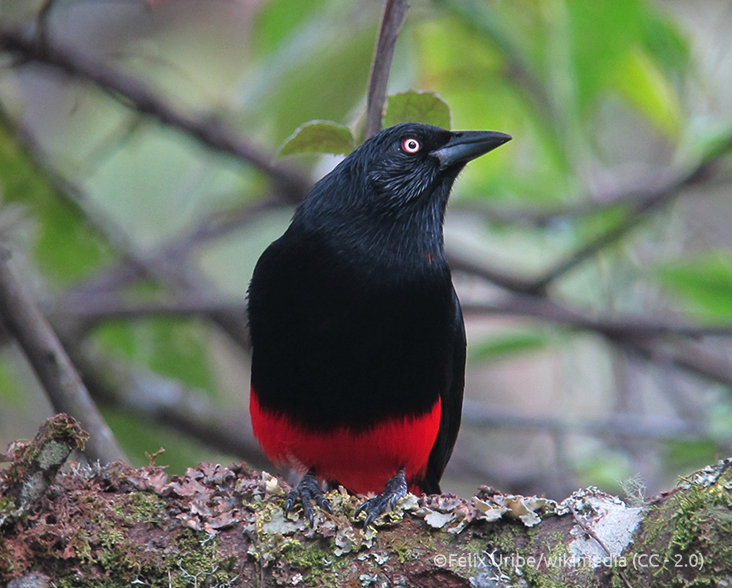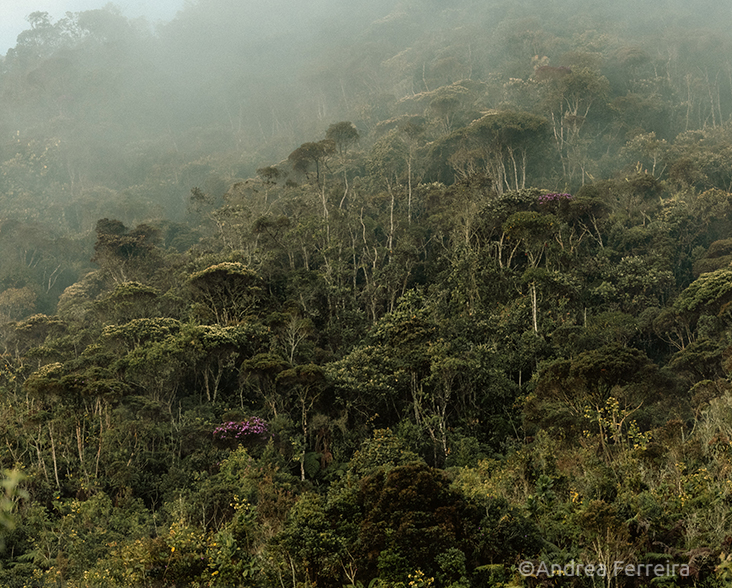Red-bellied Grackle
Species Data
Class: Aves
Order: Passeriformes
Family: Icteridae
Scientific Name: Hypopyrrhus pyrohypogaster
IUCN Red List status: Vulnerable
Description
The Red-bellied Grackle is a highly distinctive member of the New World Blackbird or icterid family. Adults are glossy black with a bright red belly, lower flanks, vent and undertail-coverts. The feather shafts on the crown, nape, ear coverts and throat are pointed and shiny black forming a streaked appearance. The bill and legs are black, and the bicoloured iris is pale yellow surrounded by a scarlet red margin. Sexes are similar, although males are larger at 31.5 cm in length and weigh 101 g compared to around 27 cm in length for females. Juveniles are dull dark brown with an orange belly, lower flanks, vent and undertail-coverts.
The varied song is mix of loud musical shrieks and whistles, and calls consist of loud gurgles and trills.
Behaviour
Red-bellied Grackle is a social species, moving around in flocks of up to 30 individuals and sometimes joining mixed-species flocks. They are omnivorous, foraging in the tree canopy for fruits, berries, Chusquea bamboo seeds, insects and spiders.
This species is also a cooperative breeder. Built by the female, the nest consists of a large cup of sticks and dry leaves positioned around 9 m above ground. The 2-4 greenish-grey, brown and lilac spotted eggs are incubated by the female for 13-15 days. After hatching, the chicks are fed by 3-6 group member that can include adults and older juveniles, on a diet of insects until they fledge at around 14-18 days. Fledglings stay close to the nest for around five days before.


Habitat
A restricted range species endemic to the Colombian Andes, the Red-bellied Grackle is resident in primary and secondary montane forest, forest edges, plantations of non-native trees, scrub and pastures, between 800-2,400 m, but mostly above 1,200 m.
Threats and Conservation
The Red-bellied Grackle is listed as Vulnerable on the IUCN Red List. With the population small and fragmented, the Red-bellied Grackle is generally rare but locally quite common in some locations. Recent surveys have shown the total population was previously underestimated, with this species found in several new sites. Although tolerant of degraded habitats, it is thought that this species is dependent on mature montane forest. Around 90% of its montane forest habitat has already been lost due to logging and agricultural expansion, and with deforestation and fragmentation within its range continuing, the population is likely slowly declining. Other threats include persecution by farmers as a maize crop pest, trapping for the cage-bird trade, and brood parasitism by Giant Cowbirds.
Created in 1990 by WLT partner Fundación Guanacas Bosques de Niebla, the Guanacas Reserve is one of the strongholds of this species. Preserving remaining fragments of native vegetation and creating habitat corridors are vital to connect isolated populations and ensure the long-term survival of the Red-bellied Grackle.
